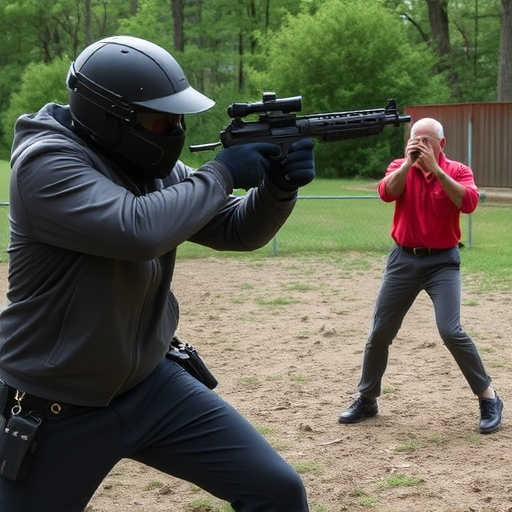Understanding voltage's role in electromagnetism is crucial for stun guns, as it affects their effectiveness through clothing. Material conductivity, thickness, and weave determine how well fabric shields against electric flow. To safely and effectively charge a stun gun, follow these steps: use a device designed for barrier penetration, employ the recommended charger, allow full charging time, maintain regular cycles, and store with a partial charge. These practices optimize performance and longevity.
Voltage penetration through thick clothing is a critical factor in understanding the effectiveness of personal defense tools like stun guns. This article delves into the science behind voltage and its interaction with various materials, exploring factors that influence clothing’s resistance to electric flow. We also offer practical advice on optimizing stun gun charging techniques for maximum penetration, providing essential insights for users seeking to charge their devices properly and enhance their safety.
- Understanding Voltage and Its Behavior Through Materials
- Factors Affecting Clothing's Resistance to Electric Flow
- Optimizing Stun Gun Charging Techniques for Maximum Penetration
Understanding Voltage and Its Behavior Through Materials

Voltage, a fundamental concept in electromagnetism, represents the difference in electric potential energy between two points. When it encounters materials, its behavior can be complex and varies based on factors like the material’s composition and thickness. Understanding how voltage interacts with different substances is crucial for applications such as charging devices or, more pertinently, using stun guns effectively.
In the context of a stun gun, knowing how voltage penetrates clothing is essential to ensure its proper functionality. Proper charging techniques rely on this understanding, as it dictates the optimal energy transfer needed to incapacitate a target. While high-voltage outputs can seemingly penetrate thick fabrics, the effectiveness diminishes with material composition and thickness. Therefore, following recommended guidelines for how to charge a stun gun properly is vital, ensuring both safety and efficacy.
Factors Affecting Clothing's Resistance to Electric Flow

The resistance of clothing to electric flow, or voltage penetration, is influenced by several key factors that determine how effectively it can protect against electrical hazards, particularly when charging a stun gun properly. The first and perhaps most obvious factor is the material of the fabric. Different materials have varying levels of conductivity, with insulators like cotton and wool providing a higher resistance to electric current compared to conductors such as metal. This is why clothing made from non-conductive materials is often recommended for those handling electrical devices, including stun guns.
Thickness and structure are another critical aspect. Fabrics that are denser and have a tighter weave tend to offer more resistance to electric flow, making them more effective at shielding against voltage penetration. This is why heavy-duty workwear or specialized protective clothing is often designed with these characteristics in mind, ensuring maximum protection when dealing with potential electrical hazards during the proper charging of stun guns or other similar devices.
Optimizing Stun Gun Charging Techniques for Maximum Penetration

When it comes to optimizing the charging techniques for a stun gun, understanding how to charge it properly is crucial for achieving maximum voltage penetration through thick clothing. The process involves several key considerations. First, ensure your device is designed to penetrate such barriers effectively; not all stun guns are created equal in this regard. Next, use the recommended charger provided by the manufacturer; using incompatible chargers can lead to suboptimal performance or even damage to the device.
Proper charging also requires allowing enough time for a full charge cycle. Ignoring this step may result in incomplete penetration due to insufficient power. Additionally, maintaining regular charging cycles and avoiding overcharging are essential. Stun guns should be stored with a partial charge rather than fully charged to prolong their lifespan and ensure consistent performance when needed most.
Understanding the factors that influence voltage penetration through thick clothing is crucial for optimizing the charging techniques of stun guns. By comprehending the behavior of voltage and the resistance presented by different materials, users can ensure they employ these devices effectively and safely. The key lies in a proper grasp of how to charge a stun gun, factoring in clothing thickness and other relevant variables. This knowledge empowers individuals to make informed decisions when it comes to personal safety and the efficient deployment of stun guns.
